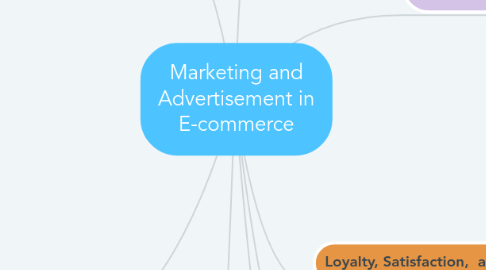
1. Personalization and Behavioral Marketing
1.1. personalization The matching of services, products, and advertising content with individual consumers and their preferences
1.2. user profile The requirements, preferences, behaviors, and demographic traits of a particular customer
1.3. cookie A data file that is placed on a user’s hard drive by a remote Web server, frequently without disclosure or the user’s consent, which collects information about the user’s activities at a site
1.4. behavioral targeting Targeting that uses information collected about an individual’s Web-browsing behavior, such as the pages they have visited or the searches they have made, to select an advertisement
1.5. collaborative filtering A market research and personalization method that uses customer data to predict
2. Market Research for E-Commerce
2.1. Data Collection in the Web 2.0 Environment
2.2. Observing Customers’ Movements Online
2.3. Web bugs
2.4. spyware
2.5. Web Analytics and Mining
2.6. clickstream data
2.7. Web mining
3. Online Advertising Methods
3.1. MAJOR CATEGORIES OF ADS
3.1.1. 1.Classified Ads 2.Display Ads 3.Interactive Ads
3.2. banner
3.3. keyword banners
3.4. random banners
3.5. live banners
3.6. Benefits and Limitations of Banner Ads
3.7. pop-up ad
3.8. pop-under ad
3.9. e-mail marketing
3.10. e-mail advertising
3.11. search advertising
4. Consumer Behavior Online
4.1. Major Influential Factor
4.1.1. 1.Personal Characteristics 2.Product/Service Factors 3.Merchant and Intermediary Factors
4.2. E-commerce system
4.2.1. 1.Motivational Factors 2.Hygiene Factors
4.3. Enviromental Factors
4.3.1. 1.Social Variables 2.Cultural/Community Variables 3.Other Environmental Variables
5. Consumer Purchasing Decision-Making Process
5.1. A GENERIC PURCHASING-DECISION
5.1.1. 1.Need identification 2.Information search -product brokering -merchant brokering 3.Evaluation of alternatives 4.Purchase and delivery 5.Postpurchase activities
5.2. PLAYERS IN THE CONSUMER DECISION PROCESS
5.2.1. 1.Initiator 2.Influencer 3.Decider 4.Buyer 5.User
6. Loyalty, Satisfaction, and Trust
6.1. customer loyalty e-loyalty
6.1.1. 1.Trust-The psychological status of willingness to depend on another person or organization
6.1.2. 2.Online trust -The belief that an online website or other digital entities can deliver what they promise so that the recipient trusts them

